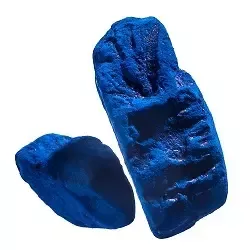Exploring the Heritage and Techniques of Natural Indigo Pigment Production in Traditional Factories
The Revival of Natural Indigo Pigment Factories A Sustainable Future for Dyes
In recent years, the global textile and fashion industry has witnessed a significant shift towards sustainability, pushing many to rediscover ancient practices and natural products. One of the most remarkable comebacks is the resurgence of natural indigo pigment, traditionally used for dyeing textiles. This rich, vibrant color, known for its depth and historical significance, is stepping back into the limelight through the revitalization of natural indigo pigment factories around the world.
Indigo dyeing has roots that stretch back thousands of years, with evidence found in ancient Egyptian textiles and traditional Asian fabrics. Historically, indigo was extracted from the leaves of plants, the most renowned being *Indigofera tinctoria*. However, the invention of synthetic dyes in the 19th century led to a rapid decline in the use of natural indigo, as cheaper and more consistent alternatives flooded the market. Today, as consumers grow increasingly aware of environmental issues and the quest for sustainable fashion intensifies, there is a renewed interest in natural indigo, prompting a revival of its production.
The process of creating natural indigo pigment is intricate and labor-intensive but offers a deeply rewarding product that resonates with consumers looking to reduce their carbon footprint. Unlike synthetic dyes, which often involve toxic chemicals and non-biodegradable substances, natural indigo is cultivated using sustainable farming practices. This method not only provides an environmentally friendly alternative but also supports local economies by creating jobs in rural areas.
As the demand for natural indigo grows, factories dedicated to its production are sprouting up worldwide, particularly in regions historically known for indigo cultivation. In countries like India, Japan, and some parts of Africa, artisans are returning to their ancestral methods of dye extraction, thus preserving traditional techniques and cultural heritage. These factories often operate using artisanal methods, ensuring that each batch of dye is unique, vibrant, and infused with stories of its origin.
natural indigo pigment factories

Moreover, the revival of natural indigo pigment factories aligns perfectly with the movement towards artisanal and handmade products. Consumers today are seeking authenticity in the products they choose, wanting more than just a product; they want a narrative. Each piece dyed with natural indigo carries with it the craftsmanship, the traditions, and the communities that cultivate it. This narrative appeals to a growing demographic that values sustainability, ethics, and artistry.
Furthermore, natural indigo is not only popular in textiles but also in other industries, including cosmetics and paints. This versatility opens up various avenues for these factories, encouraging innovation while still prioritizing sustainability. The collaboration between modern technology and ancient practices is bound to lead to exciting developments in the use of natural indigo.
Despite the encouraging trends, challenges remain. The natural indigo industry faces competition from synthetic dyes, which are more readily available and cheaper. Additionally, like any agricultural product, natural indigo production is vulnerable to climate change, pests, and fluctuating market demands. Hence, it is crucial for stakeholders—farmers, manufacturers, and consumers alike—to champion sustainable practices and support local indigo producers.
In conclusion, the revival of natural indigo pigment factories signifies more than just a trend; it is a movement towards sustainable practices, cultural appreciation, and ethical production. As the fashion industry increasingly embraces eco-friendly alternatives, natural indigo stands out as a testament to the harmony between tradition and modernity. By supporting these factories, we are not just making a choice for quality and artistry but also for the planet, ensuring that the stories behind the dyes can continue to be told for generations to come.
-
The Timeless Art of Denim Indigo Dye
NewsJul.01,2025
-
The Rise of Sulfur Dyed Denim
NewsJul.01,2025
-
The Rich Revival of the Best Indigo Dye
NewsJul.01,2025
-
The Enduring Strength of Sulphur Black
NewsJul.01,2025
-
The Ancient Art of Chinese Indigo Dye
NewsJul.01,2025
-
Industry Power of Indigo
NewsJul.01,2025
-
Black Sulfur is Leading the Next Wave
NewsJul.01,2025

Sulphur Black
1.Name: sulphur black; Sulfur Black; Sulphur Black 1;
2.Structure formula:
3.Molecule formula: C6H4N2O5
4.CAS No.: 1326-82-5
5.HS code: 32041911
6.Product specification:Appearance:black phosphorus flakes; black liquid

Bromo Indigo; Vat Bromo-Indigo; C.I.Vat Blue 5
1.Name: Bromo indigo; Vat bromo-indigo; C.I.Vat blue 5;
2.Structure formula:
3.Molecule formula: C16H6Br4N2O2
4.CAS No.: 2475-31-2
5.HS code: 3204151000 6.Major usage and instruction: Be mainly used to dye cotton fabrics.

Indigo Blue Vat Blue
1.Name: indigo blue,vat blue 1,
2.Structure formula:
3.Molecule formula: C16H10N2O2
4.. CAS No.: 482-89-3
5.Molecule weight: 262.62
6.HS code: 3204151000
7.Major usage and instruction: Be mainly used to dye cotton fabrics.

